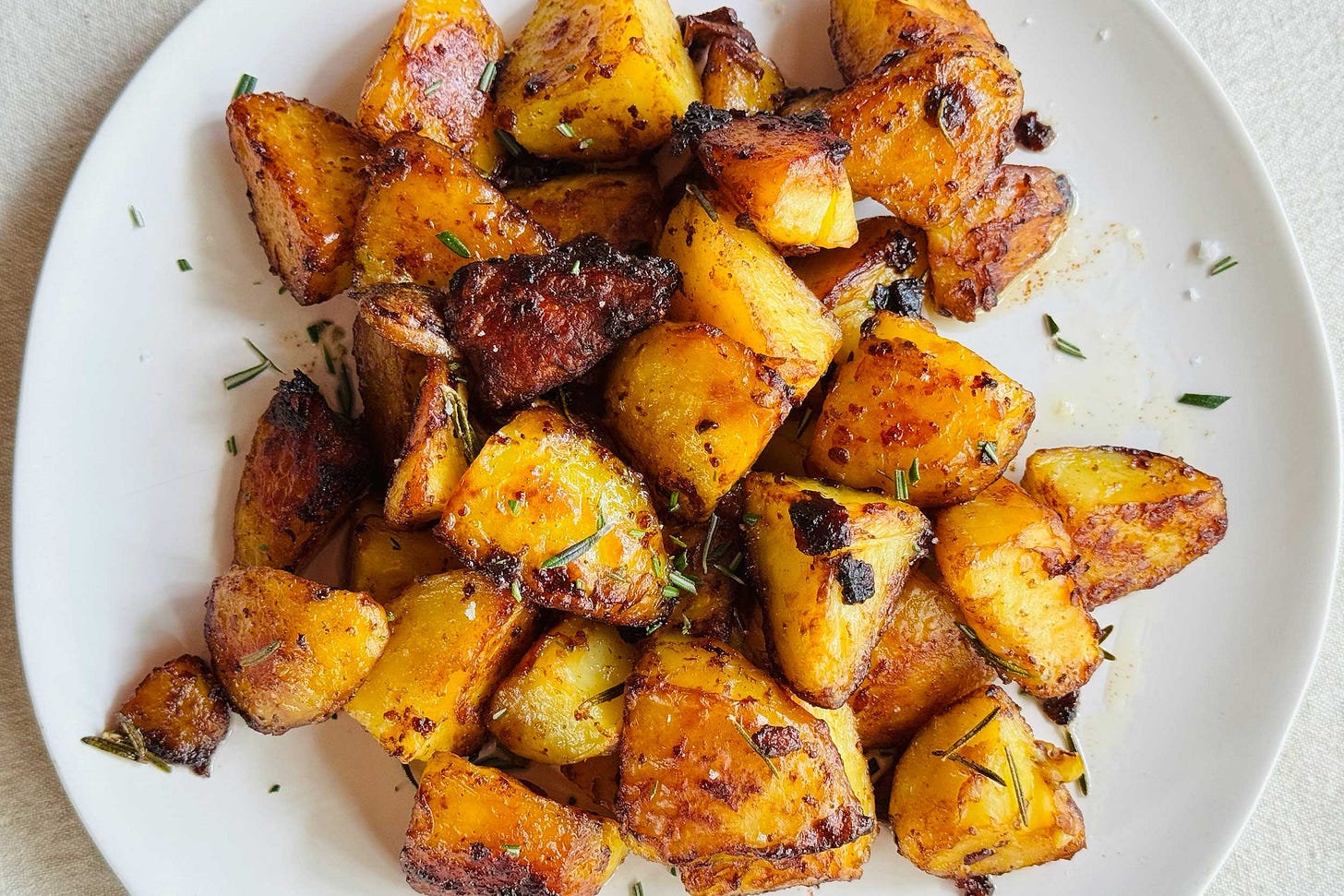The secret umami weapon you never thought to use
Don't freak out: It's Marmite
Welcome back to Cool Beans, the place to be for cooking deliciously and sustainably. We’re big on umami bombs around here. Deeply savory ingredients like liquid aminos, nutritional yeast, and miso come in especially handy for making plant-based versions of meaty dishes, but another unsung hero of our sustainable pantry is a little less common this side of the pond. Today I’m sharing the scoop on Marmite, the tangy English spread that polarizes taste buds around the globe.
If you’re not in the Marmite fan club, just hear me out for a second: It (and its Australian sister, Vegemite) is a low-waste wonder, and it shines in a plant-based kitchen. It’s made from yeast left over from beer production combined with salt, spices, and vitamins like B12—which is great because vegetarian diets are usually low on that particular nutrient. Marmite is also high in glutamate, an amino acid that provides the unmistakable salty-savory umami sensation.
You also don’t need a lot of it to make a big difference. Just the smallest bit can add richness to stews and braises or give a meaty quality to meatless Bolognese, chili, or burgers. Today I’m tapping it to level up a pair of stupid-simple dishes: roasted veggies and a sneakily cheesy spring pasta that’s got zero cheese.
The review: New to Marmite? This spud’s for you
Straight outta the jar, Marmite packs an intensely salty and tangy punch with a slight sweetness. Devotees will gleefully slather the stuff on toast, mixing it with butter to make the thick, molasses-y spread more schmearable. I became a fan when I tried a Welsh rarebit (basically cheesy Marmite toast) last year, but I’ve since learned that the yeast extract can flex its umami muscles well beyond bread. Meat-and-potatoes people will appreciate where this is going: These crispy, roasted potatoes taste meaty but are, in fact, 100% vegetarian.
Let me get the awkward bit out of the way: I don’t really like potatoes. Before you come at me, I do eat fries and some breakfast potatoes (the crispier the better), but I find the “classic” baked and mashed varieties to be kinda bleh. I need aggressive seasoning and contrasting textures, which is exactly what this recipe served. Not only is it loaded with tips for better roasted potatoes—like boiling first, then roasting low and slow for maximum crisp—but the Marmite-infused butter pushes these spuds into extreme craveable territory.
Check out the full method for Marmite roasted potatoes.
While the potatoes are boiling and cooling, a butter bath gets infused with smashed garlic, rosemary, thyme, and a couple tablespoons of the dark, sticky extract. The Marmite adds salt, seasoning, and “meaty” flavors, but it also encourages browning so the taters get super golden and crispy in the oven. I imagine this mixture would taste amazing with the addition of honey or maple to round out the flavor and further promote caramelization. Just think about it on some roasted carrots or parsnips!
There’s a drastic difference between tasting Marmite out of the jar and biting into one of these epic spuds. What once was aggressively salty and bitter has mellowed out into a more complex, savory flavor that reminds me of gravy. This is exactly why plant-based recipes can benefit from a hit of Marmite umami. To further explore this idea, next I’ll be adding some to a pasta that I would normally be “seasoning” with bacon or pancetta.
The recipe: A spring veggie pasta with a secret
Similar to other umami-loaded ingredients like anchovies and miso, a little bit of Marmite can immediately add dimension to whatever you’re cooking. While it may taste too intense for a lot of folks right out of the jar, it melts beautifully into dishes and can make whatever you’re cooking taste like you’ve been at it for hours. Take this pasta, for example, which is loaded with bright spring veggies but tastes as rich and satisfying as a pork-filled carbonara. With no little piggies in sight, a dab of Marmite drives those meaty flavors forward.
Marmite Spaghetti with Spring Veggies
Yield: 4 servings




